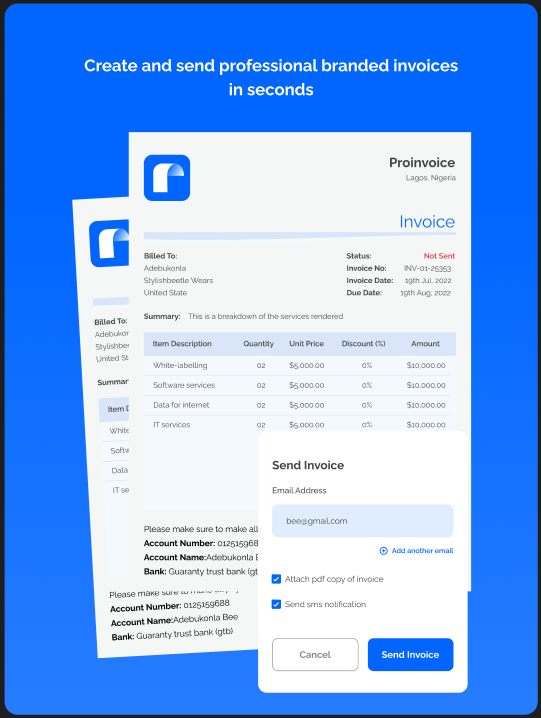A project timeline is an indispensable tool in project management, helping you plan, track, and execute your projects efficiently.
As we all already know, project management is a critical aspect of any successful endeavor, whether it’s launching a new product, starting a new business after developing your business plan organizing a corporate event, or building a house.
In this comprehensive guide, we will explore what a project timeline is, why it’s crucial, and how to create one effectively.
We’ll provide you with practical insights and guidance, ensuring that you have a clear understanding of project timelines and how to harness their power for your projects.
What Is a Project Timeline?
A project timeline, also known as a project schedule, is a visual representation of the chronological sequence of tasks, milestones, and events that make up a project.
It outlines the start and end dates of each task and shows their inter-dependencies.
Project timelines provide a clear road-map for the entire project team, helping them understand what needs to be done, when it needs to be completed, and how different tasks relate to one another.
Why Are Project Timelines Crucial?
If you constantly work on projects as a freelancer, you must make it a point of duty to use project timelines if you are to achieve your goals without stress.
Project timelines play a vital role in successful project management for several reasons:
Planning and Organization: A well-structured project timeline is the foundation of a well-planned project.
It helps you break down complex projects into manageable tasks, creating a clear path toward completion.
Resource Allocation: By specifying when each task should be performed, project timelines allow you to allocate resources, such as manpower and budget, more efficiently.
This prevents overloading team members and ensures that resources are available when needed.
Deadline Management: Project timelines make it easy to track project progress and ensure that you meet important deadlines.
Delays and bottlenecks become visible, allowing you to take corrective actions promptly.
Communication: Project timelines serve as a communication tool, enabling you to convey project details to team members, stakeholders, and clients in a clear and understandable way.
This transparency fosters collaboration and keeps everyone on the same page.
Risk Management: By identifying dependencies and critical paths, project timelines help you anticipate potential risks and challenges.
This proactive approach allows you to implement strategies to mitigate issues as they arise.
Quality Control: With a clear timeline, you can allocate time for thorough quality control and testing, reducing the likelihood of errors and defects in the final deliverables.
Now that we’ve established the significance of project timelines let’s dive into how to create one effectively.
How to Create a Project Timeline
Creating an effective project timeline requires careful planning and attention to detail. Here’s a step-by-step guide to help you get started:
1. Define Your Project Scope and Objectives
Begin by clarifying the scope of your project and setting clear, measurable objectives. This step is crucial as it forms the foundation upon which your project timeline will be built.
You need to know what the project aims to achieve, its limitations, and the specific deliverables expected.
2. Identify Key Tasks and Milestones
Break down your project into its constituent tasks and identify key milestones.
Tasks are individual activities that need to be completed, while milestones are significant events or achievements within the project.
These milestones serve as markers of progress and can include deadlines, client approvals, or other critical points in the project.
3. Sequence Tasks and Determine Dependencies
Arrange your tasks in a logical order, considering any task dependencies. Some tasks may need to be completed before others can start.
Identifying these dependencies is essential as it ensures that tasks are performed in the correct sequence, preventing bottlenecks and delays.
4. Estimate Task Durations
Estimate the time required to complete each task. Be realistic in your estimates, taking into account factors like team capacity, resource availability, and any potential risks or delays.
Use historical data or expert judgment to guide your estimates.
5. Create a Gantt Chart
A Gantt chart is a visual representation of your project timeline. It displays tasks and milestones as horizontal bars along a timeline, with their start and end dates.
You can create a Gantt chart using specialized project management software or even with tools like Microsoft Excel.
Include the project name, task names, start and end dates, and task durations.
6. Allocate Resources
Assign team members to specific tasks based on their skills and availability.
Consider each team member’s workload and ensure that they have the necessary resources and support to complete their tasks effectively.
7. Set Deadlines
Set clear deadlines for each task and milestone. Ensure that these deadlines are realistic and achievable, taking into account the project’s overall timeline and constraints.
Remember to consider any external factors that might impact the schedule.
8. Monitor and Adjust
Once your project timeline is in action, it’s crucial to regularly monitor progress. Track the actual start and end dates of tasks, and compare them to the planned timeline.
If you notice deviations or delays, take corrective action immediately, whether it’s reallocating resources, adjusting deadlines, or addressing unexpected issues.
9. Communicate and Collaborate
A successful project timeline is not just a document; it’s a communication tool. Share the project timeline with your team, stakeholders, and clients.
Encourage collaboration and keep everyone informed about the project’s progress and any changes to the timeline.
10. Use Project Management Software
Consider using project management software to streamline the creation and management of your project timeline.
These tools often come with features for task scheduling, resource allocation, and progress tracking. They can save you time and provide real-time insights into your project’s status.
Conclusion
A project timeline is an indispensable tool for successful project management. It provides a clear roadmap, helps you manage resources, meets deadlines, communicates progress, and mitigates risks.
By following these steps and keeping your project timeline updated, you can enhance your project management capabilities and increase the likelihood of delivering successful outcomes.
Remember, the key to an effective project timeline is to keep it flexible. Projects are dynamic, and unexpected events can occur.
Your timeline should allow for adjustments while maintaining a clear path towards your project’s goals.
Now that you have a solid understanding of project timelines and how to create them, you’re better equipped to tackle your projects with confidence and precision.













